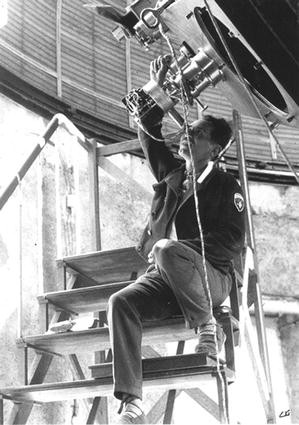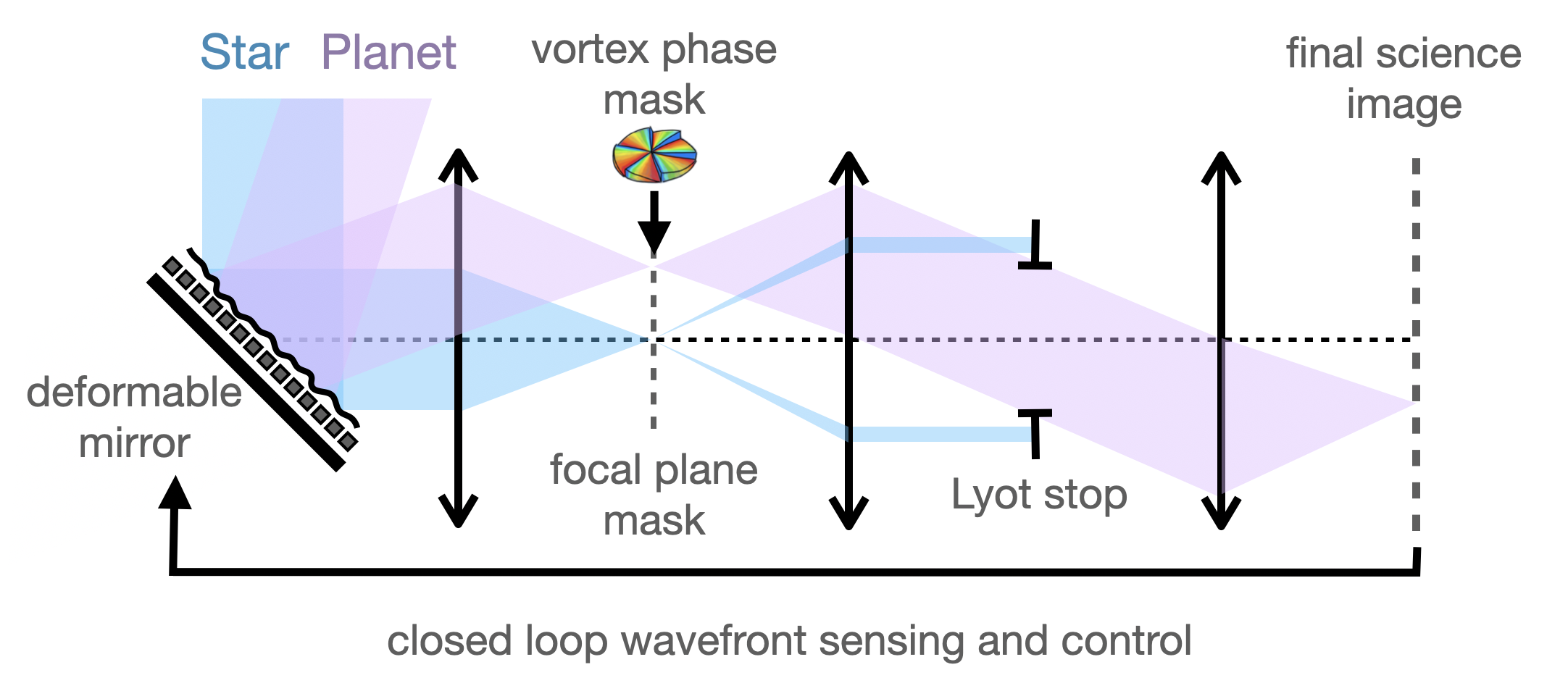Niyati Desai
Coronagraphy 101
Basics of Coronagraph Instruments for Direct Imaging
How can we see planets outside our solar system?
History
 Bernard Lyot first invented a device called a coronagraph in 1931, to block out the Sun’s light in order to image its corona without waiting for an eclipse. His original coronagraph employed a mask with a simple opaque central spot which was placed at the telescope's focus to obscure the sun's light.
Bernard Lyot first invented a device called a coronagraph in 1931, to block out the Sun’s light in order to image its corona without waiting for an eclipse. His original coronagraph employed a mask with a simple opaque central spot which was placed at the telescope's focus to obscure the sun's light.
Since then, coronagraph technology has come a long way and is now being pushed to achieve new levels of contrasts between planet and star light. Upcoming space telescope missions will require the ability to image planets that are on the order of 10 billion times dimmer than their stars!
Today, over 5,000 exoplanets have been detected and yet less than 2% have ever been directly imaged! The major problem astronomers face in trying to directly image exoplanets is that the stars they orbit are millions of times brighter than the planets. Any light reflected off of the planet or thermal radiation from the planet itself is drowned out by the brightness of its host star. It's like trying to see a firefly next to a lighthouse from far out at sea.
To confine our attention to terrestrial matters would be to limit the human spirit. - Stephen Hawking
How it Works
A coronagraph's primary function is to suppress on-axis starlight while allowing off-axis light to pass through, so objects such as planets or circumstellar disks can be imaged. Classic coronagraphs use a focal plane mask, which when centered on a star, diffracts light outside the pupil to then be blocked downstream by a Lyot stop in the pupil plane. Modern corongraphs incorporate deformable mirrors to correct wavefront abberations so the light can be better focused on the focal plane mask. Additionally, more complex focal plane mask designs which reject starlight better are continuously being developed. This schematic shows the general working principle of a coronagraph.

Future Space Telescopes
The following video shows the how the coronagraph for NASA's upcoming Roman Space Telescope will work. This mission has a dedicated Corongraph Instrument specially designed for exoplanet imaging.